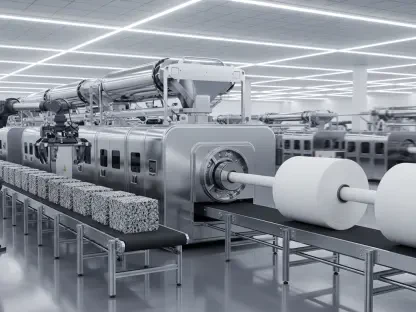Advanced analytics have become a game changer for manufacturing logistics, offering unprecedented insights and data-driven decision-making capabilities. As businesses strive for greater efficiency and competitiveness, leveraging technologies like IoT, AI, and machine learning has become essential for optimizing supply chains and enhancing overall performance. Manufacturing logistics has always been a complex field, requiring the coordination of many moving parts. However, with the advent of advanced analytics, companies can now analyze vast amounts of data in real-time, providing actionable insights that help streamline operations, predict trends, and improve decision-making processes.
The Importance of Advanced Analytics in Manufacturing Logistics
Advanced analytics extend beyond mere data collection and basic metrics. They convert raw data into precise and meaningful metrics that businesses can use to enhance their operations. The key enablers, including real-time data, IoT, AI, and machine learning, make it possible to capture intricate details of logistics processes, providing a comprehensive view of the supply chain. These insights allow businesses to identify inefficiencies, optimize routes, and make proactive adjustments to their logistics strategies. With advanced analytics, companies can gain visibility into every aspect of their supply chain, from inventory management to transportation logistics, ensuring smoother operations and timely deliveries.
In a rapidly changing market, the ability to quickly adapt to new conditions is essential. Advanced analytics provide the agility needed to stay competitive by monitoring trends and forecasting changes. This capability helps businesses anticipate potential disruptions, enabling them to make informed decisions and remain agile. By applying sophisticated algorithms, companies can forecast consumer demand, determine optimal inventory levels, and predict when maintenance is needed on machinery, thus minimizing downtime and maximizing efficiency.
Benefits of Integrating Advanced Analytics
The integration of advanced analytics into manufacturing logistics offers numerous benefits. For instance, predictive analytics can accurately forecast consumer behavior and demand, allowing companies to mitigate risks associated with market variability. This foresight is invaluable in minimizing stockouts and reducing excess inventory, ensuring that products are available when needed without overextending resources. Monitoring market trends becomes more efficient through advanced analytics, which enable businesses to stay ahead of shifts in the market. This agility allows companies to adapt quickly and maintain a competitive edge.
Analyzing historical data helps improve time management and operational efficiency by identifying patterns and optimizing workflows. For example, companies can assess the performance of past projects to identify bottlenecks and areas for improvement. This continuous feedback loop helps in refining operational strategies, leading to more streamlined processes and better resource allocation. Quality control and compliance also see significant improvements with real-time data. Businesses can ensure that their products meet quality standards and regulatory requirements, reducing defects and enhancing customer satisfaction. By employing advanced analytics, companies can implement more rigorous quality checks and promptly address any issues that arise.
Data-Driven Decision Making in Logistics
One of the primary advantages of advanced analytics is its ability to empower logistics managers with data-driven decision-making tools. In many organizations, justifying decisions to stakeholders focused on ROI can be challenging. Data-backed strategies provide compelling rationales, facilitating consensus and alignment across the company. By leveraging advanced analytics, logistics managers can make informed choices that enhance supply chain efficiency. These insights are critical for strategic planning, allowing businesses to identify potential risks and opportunities. As a result, companies can allocate resources more effectively, reduce costs, and improve profitability.
The shift from intuition-based to data-driven decision-making reflects a broader industry trend toward evidence-based management. This transition not only improves decision accuracy but also fosters a culture of accountability and transparency within the organization. Data-driven decisions are easier to track and evaluate, enabling continuous improvement and refinement of logistics strategies. Additionally, advanced analytics allow for scenario planning, where companies can model different scenarios and their potential impacts. This capability supports more robust contingency planning and risk management, ensuring that businesses are better prepared for unexpected events.
Tracking Key Performance Indicators (KPIs)
Advanced analytics facilitate the measurement of complex metrics, enabling companies to track crucial KPIs effectively. For example, product cycle time measures the duration from production to delivery, allowing businesses to optimize their processes and reduce lead times. Reducing cycle times not only enhances customer satisfaction through faster deliveries but also improves inventory turnover rates, freeing up capital for other uses. Capacity utilization is another vital KPI that determines machine efficiency. By analyzing utilization rates, companies can identify bottlenecks and implement improvements to maximize productivity.
Supplier quality is also critical, as it evaluates the quality of incoming materials, helping businesses reduce defects and returns. Ensuring high-quality inputs is essential for maintaining overall product quality and reducing waste. Additionally, yield reflects the percentage of products that pass quality checks. Tracking yield rates enables businesses to conduct faster and more efficient assessments, ensuring higher quality output and customer satisfaction. Advanced analytics help in setting benchmarks and continuously monitoring these KPIs, providing a clear picture of performance and areas that require attention.
Overcoming Data Integration Challenges
While the benefits of advanced analytics are significant, the integration of diverse data sources can be complex. Combining datasets from IoT, AI, and QMS into a unified format requires meticulous planning. Businesses must address data structure, format, and protocol synthesis to develop a cohesive analytical framework. This complexity is often compounded by the volume and variety of data generated across the supply chain. Effective data integration requires robust data management practices and the use of sophisticated tools and technologies capable of handling large datasets.
Lack of standardization in data collection and analysis can lead to inconsistencies that hinder performance. To mitigate this, companies must enforce stringent data entry policies and coordinate closely with suppliers to minimize errors. Standardizing data practices across the supply chain is essential for maintaining accuracy and reliability. This standardization not only facilitates smoother data integration but also enhances data quality, enabling more accurate and meaningful insights. Security and compliance also present challenges. As businesses collect and store vast amounts of data, they must update privacy policies and ensure regulatory compliance. This includes informing stakeholders about data usage, storage protocols, and access controls to protect sensitive information.
The Future Focus: Predictive Analytics
Advanced analytics have revolutionized manufacturing logistics by providing unprecedented insights and enabling data-driven decision-making. As companies aim to boost efficiency and remain competitive, technologies like the Internet of Things (IoT), artificial intelligence (AI), and machine learning have become critical for optimizing supply chains and enhancing overall operational performance. Historically, manufacturing logistics have been a complex field involving the coordination of countless moving parts. The introduction of advanced analytics allows businesses to analyze vast amounts of data in real-time. This real-time data analysis gives actionable insights that streamline operations, predict emerging trends, and enhance decision-making processes.
In today’s highly competitive market, these technologies are not just supplementary but essential. IoT devices can track and manage inventory with pinpoint accuracy. AI can forecast demand and adjust production schedules accordingly, while machine learning algorithms can identify inefficiencies and suggest improvements. This integration of advanced analytics into manufacturing logistics translates into lower costs, reduced waste, and improved customer satisfaction. Essentially, companies can now proactively address issues before they become problems, ensuring smoother operations and a faster response to market demands. The ultimate result is a more sustainable and resilient supply chain that can adapt to changing conditions and continue to perform at a high level.









